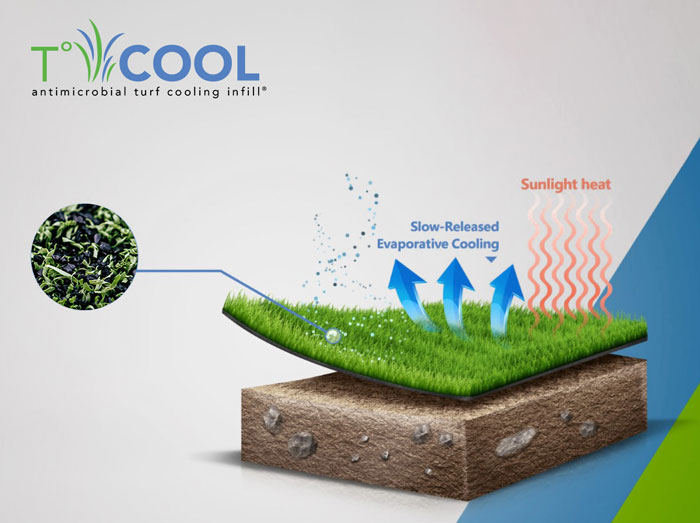With nearly 20,000 synthetic turf fields in the United States, and with approximately 1,500 new fields built each year, hundreds of thousands of athletes, coaches and officials cope with oppressive, dangerous heat that consistently exceeds 140 degrees – and can reach the 160-degree level.
According to The Centers for Disease Control and Prevention, heat illness is a leading cause of sudden death among high school athletes. Since 1995, 64 football players have died from heat stroke. Of these, 47 were in high school, 13 in college, two professional, and two organized youth. In 90 percent of these cases, the fatal incidents occurred during practice.
T°Cool technology is combating the excessive field temperature issue and making the synthetic turf cooler, safer and more playable. T°Cool, which resists bacterial attack, is an eco-friendly evaporative cooling technology that provides a cooling effect on synthetic turf surfaces by coating the black crumb rubber infill. Today, approximately 80 percent of synthetic turf fields nationwide use black crumb rubber infill, due to the benefits of fiber support, cushioning and consistency for performance. Once treated, the T°Cool solution continuously activates through rain, dew, humidity and/or watering the field, thus reducing the infill temperature/field temperature by an average of 30 to 50 degrees and bringing the overall field temperature closer to that of natural grass.
“Synthetic turf fields get dangerously hot, but there has never been a formidable and safe solution to tackle the oppressive heat. Most people don’t realize that watering a field provides only a very brief reprieve and often exasperates the heat issue,” said Chris Tetrault, Inventor of TCool. “With TCool, we can now pre-treat the black crumb rubber infill for synthetic turf fields and deliver a proven solution to make these fields cooler, safer, and more playable, and without compromising any of the key benefits.”
As an added benefit, T°Cool’s evaporative cooling solution for synthetic turf fields also reduces the coefficient of friction, thus diminishing the severity of turf burns, while effectively resisting the growth of harmful bacteria that grow on open wounds.


